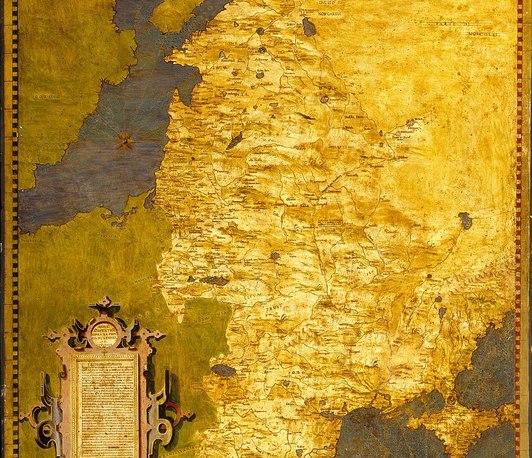Mapping Entanglements of Art, Animal Furs, and Unfree Persons Between the Early Modern Baltic and Italy: the Case of Late Seicento Lithuania and Tuscany
Research Seminar Series: “Shifting Images and Ideas of Europe’s East: An Art Historical Approach from the Margins”
- Date: May 2, 2023
- Time: 03:00 PM - 05:00 PM (Local Time Germany)
- Speaker: Ruth Sargent Noyes
- Location: Villino Stroganoff, Via Gregoriana 22, 00187 Rome and online
- Contact: freiberg@biblhertz.it

We will examine how both sides discursively negotiated questions of identity and significance, as well as geographical and cultural boundaries. We will use artifacts and performative cultural practices to understand how the associated processes of inclusion and exclusion did function, how Europe was repeatedly produced and constructed in the changing field of tension between East and West, and under what conditions and with what intentions these shifts did occur.
6th Research Seminar “Mapping Entanglements of Art, Animal Furs, and Unfree Persons Between the Early Modern Baltic and Italy: the Case of Late Seicento Lithuania and Tuscany”
Taking
as its point of departure the map of early modern Lithuania and Livonia (present-day
Latvia and Estonia) in the Medicean sala delle Carte Geografiche in
the Palazzo Vecchio, Florence, this lecture reevaluates conventional
understandings of cultural dynamics between Italy and the Baltic region,
reframing relations between Europe’s perceived western centers and purported
north-eastern peripheries.
The lecture also takes into account Italo-Baltic
entanglements of non-canonical artifacts, makers, and techniques in art
history, as a means to address questions of how studies of north-eastern
Europe’s art histories, and of north-eastern Europe’s ‘place’ in art history,
can contribute to ongoing discussions in the field which center around
productively problematizing notions of canonicity, de-colonizing early modern
histories (including those of Europe), and recovering previously marginalized
or even silenced subjectivities. These methodological questions are framed by
means of a case study in the seventeenth-century exchange of works of art and
luxury objects between the noble Medici and Pac (or Pacowie) families, who
represented the Grand Duchies of Tuscany and Lithuania, respectively. The
lecture explores how bi-directional notions of Tuscan-Lithuanian identity were
on one hand intrinsically bound up with discursive constructions of cultural
geography and performative cultural practices, and on the other hand were
physically entangled with the entwined trades in luxury animal furs and
enslaved persons that tethered the Baltic with Italy for centuries.
Ruth Sargent Noyes is Marie Skłodowska-Curie EU Senior Research Fellow at the National Museum of Denmark in Copenhagen. Author and editor of a number of books and articles, her recent research is especially focused on the art and architecture of the Baltic-Nordic region c. 1400-1800 in its global context. A 2014 Fellow of the American Academy in Rome and recipient of a number of research grants and awards, she is currently completing a Marie Skłodowska-Curie European Union Individual Fellowship Project, which has been additionally supported by more than twenty grants for field research and research residencies, including national funding from the Baltic states.
Scientific organization: Jana Graul and Seraina Renz